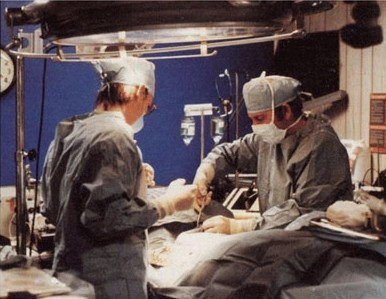Anaesthesia: Better Understanding of Process ‘Prevents Patients Waking up Mid-Surgery’

A study of the brainwaves of patients who are under general anaesthetic could be used to prevent future patients waking up in the middle of surgery.
While anaesthesia has been widely used for over 150 years, little is known about how the drugs produce such a profound loss of consciousness.
Researchers at the Massachusetts Institute of Technology and Massachusetts General Hospital have identified brain patterns during the different stages of anaesthesia.
The found that the patterns seen when a patient goes under anaesthesia are the same as when they emerge from unconsciousness. A change happens to the brainwaves in between these two stages.
The scientists believe these brainwaves could be studied by anaesthesiologists during surgeries to prevent people from waking up mid-operation.
While waking up during surgery is rare, it does occur in around one or two people in every 10,000 operations.
Patrick Purdon, lead author and instructor of anaesthesia at MGH and Harvard Medical School, said: "It's not something that we're fighting with every day, but when it does happen, it creates this visceral fear, understandably, in the public.
"And anaesthesiologists don't have a way of responding because we really don't know when you're unconscious. This is now a solved problem."
At present, anaesthesiologists use a monitoring system that takes electroencephalogram (EEG) information and combines it into a single number between zero and 100.
Better idea of patient state
However, this reading obscures the information most useful to the anaesthesiologists.
The study looked at people being placed under the general anaesthesia drug propofol.
The EEG showed that as patients became less responsive, there was a fluctuation of brain activity in the low frequency and alpha frequency of the brain - Alpha oscillations peaked when the low-frequency waves were at the lowest point.
When heavily sedated, the brainwaves shifted, so the alpha and low-frequency waves peaked at the same time.
On regaining consciousness, the waves returned to the pattern seen when falling out of consciousness - with the Alpha waves peaking when the low-frequency waves were at their low point.
"That is the signature that would allow someone to determine if a patient is coming out of anesthesia too early, with this drug," Purdon said.
Researchers believe these fluctuations disrupt normal communication between the different regions of the brain.
They say this information is available through EEG monitors so could be used as a way of checking a patient is not regaining consciousness during surgery.
MIT professor Emery Brown said: "When anaesthesiologists are taking care of someone in the operating room, they can use the information in this article to make sure that someone is unconscious, and they can have a specific idea of when the person may be regaining consciousness."
© Copyright IBTimes 2025. All rights reserved.






















